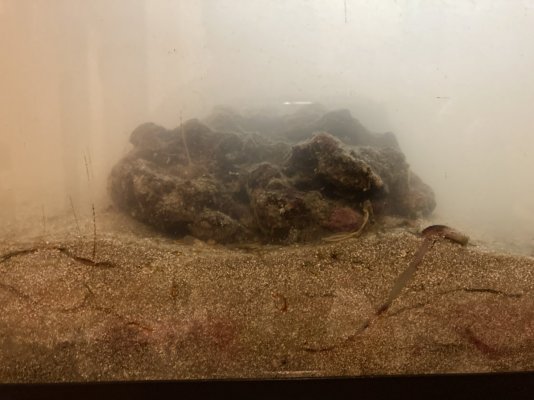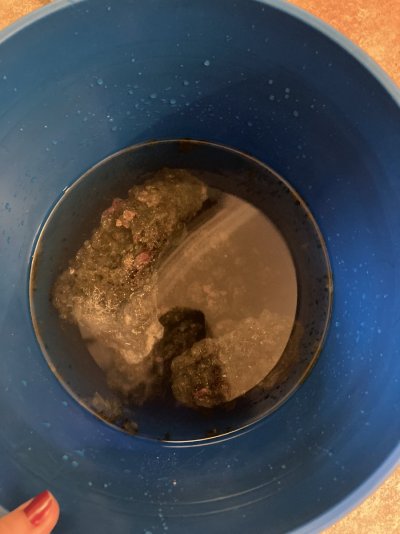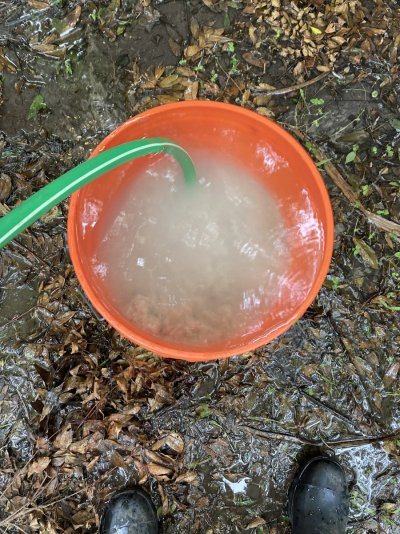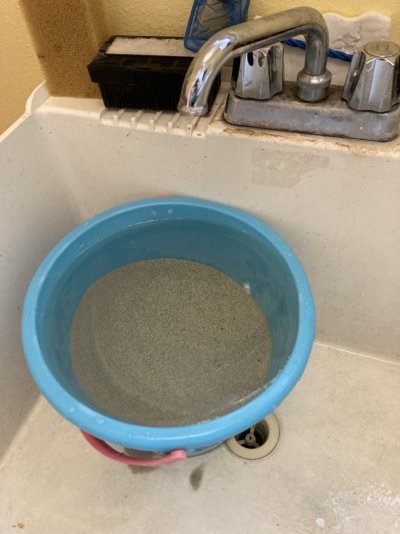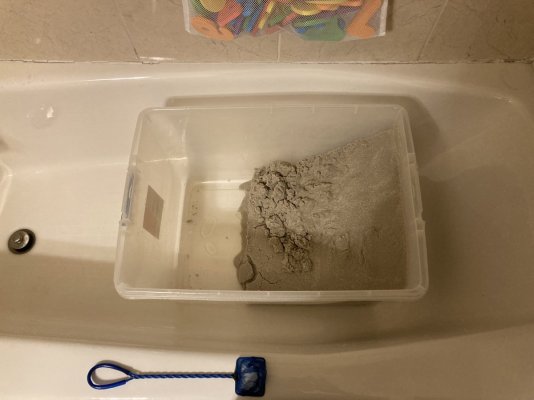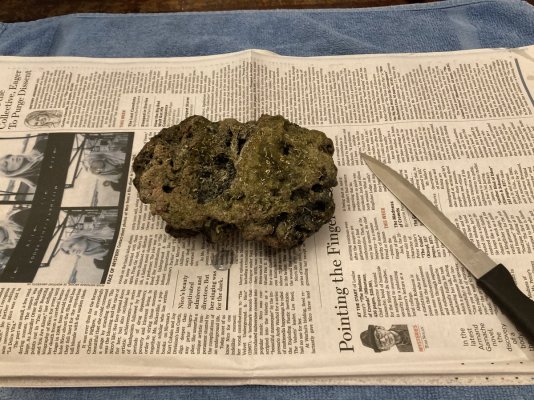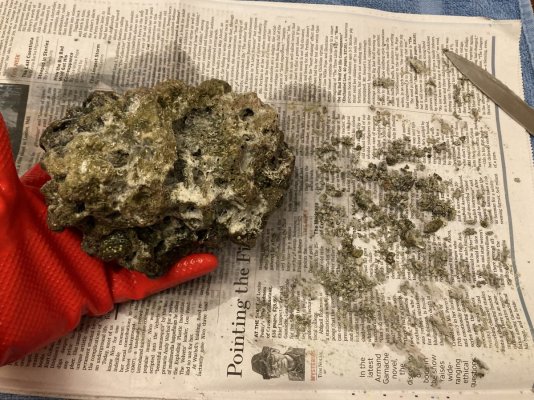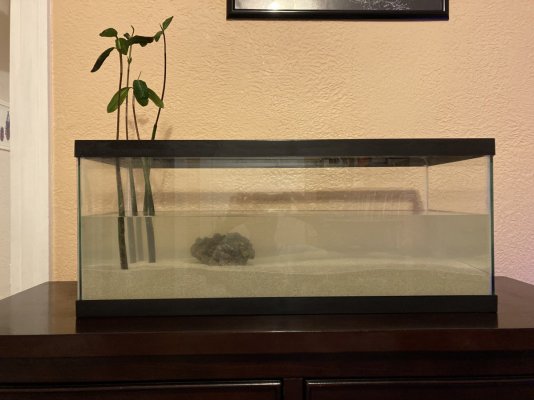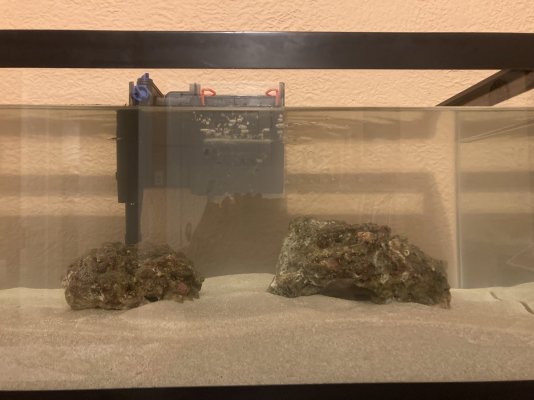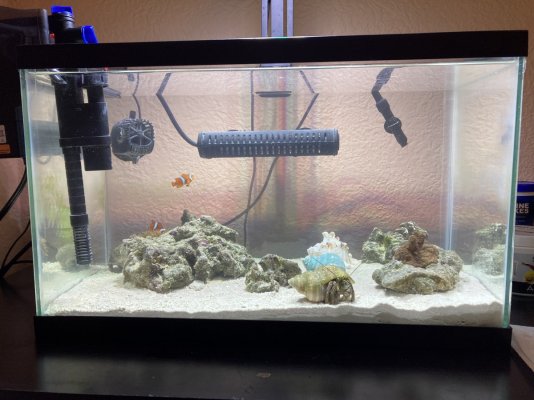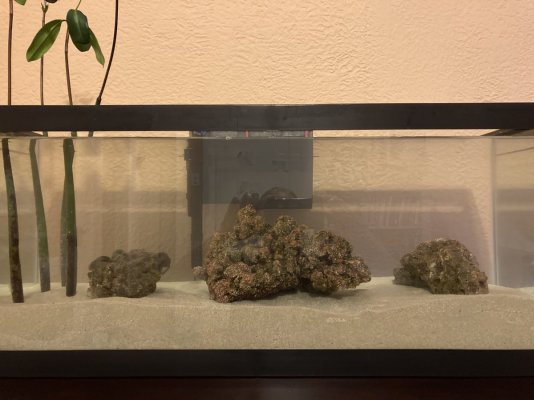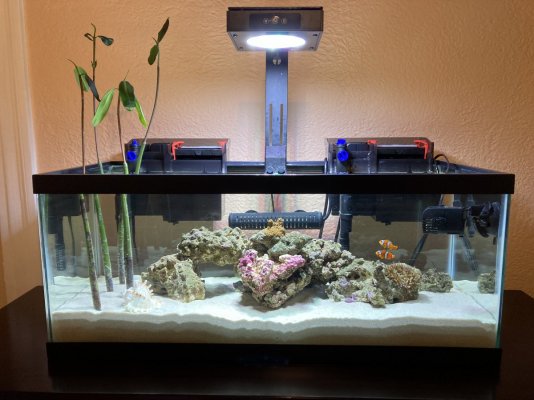I set up a 20 gal saltwater tank for a couple of hermit crabs my kids brought home from the beach last summer, and have been tinkering with and adding to it ever since (live rock, mangrove trees, sps coral, two clownfish and a bubble tip anemone). As of two weeks ago, water parameters were good and everything was doing nicely. Then Ida knocked the power out. When we evacuated, we took the critters and a small amount of live rock with us in a 10 gal tank. We arrived home last night and I’m now beginning the work of cleaning and rebuilding the 20 gal. There was a thick, gelatinous film over the water, and dead worms everywhere. Breaking the surface caused a strong rotten egg smell to escape. I’m attaching a pic of one of the rocks, as seen through the murky water, dead worms and all. I moved the live rocks to a 5 gal bucket and covered them with fresh salt water (see pic), then drained as much water from the tank as possible. Next I’ll be removing the sand and rinsing until it’s perfectly clear.
